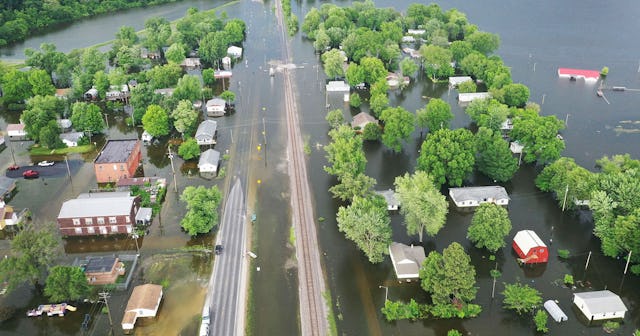A UN Draft Report Warns 280 Million People Could Be Displaced By Rising Sea Levels In A Generation

A new UN draft report just tells us what we already know: We need to act on climate change now
A new draft report from the UN that was leaked to reporters this week doesn’t really tell us anything new. It just goes into absolutely terrifying new details about what consequences we’ll face if we don’t take immediate and drastic action to curb climate change.
The report outlines some of the likely scenarios that will result from an overall 2-degrees-Celsius increase in global temperature, a benchmark that’s actually considered pretty optimistic with our current production habits, which are more likely to increase the global temperature somewhere in the range of 4 degrees Celsius in the next few generations. But UN scientists predict in the report that we’ll hit 2 degrees warmer by 2100, and some truly horrific consequences will begin even long before then.
For starters, that kind of warming will raise sea levels enough to displace 280 million people, scientists say. At that temperature, sea levels will be at least one meter higher than they are now, which could destroy large parts of major coastal cities like Shanghai, Ningbo, Taizhou, Mumbai — and yes, New York, Miami, and Los Angeles. In the U.S., we’re already seeing major consequences of sea level rise that’s happened in recent years in the devastating flooding that’s happened in coastal cities hit by superstorms.
“There is a pervasive thread in the US right now promoted by techno-optimists who think we can engineer our way out of this problem,” Michael Mann, director of the Earth System Science Center at Pennsylvania State University, said. “But the US is not ready for a metre of sea level rise by 2100. Just look at what happened in the wake of superstorm Sandy, Katrina, in Houston, or Puerto Rico.”
Speaking of superstorms, those won’t stop without drastic action on climate change, either. According to the UN report, on our current trajectory, we’ll be seeing superstorms hitting major global cities every year. That’s not terribly surprising, considering we already experience one global climate disaster every week. If we stay on this same path, El Niño storm frequency will double, and the damage caused by superstorms could increase by a factor of 100 to 1000, the UN warns.
While the science that contributed to this report is all peer-reviewed and globally accepted, that doesn’t mean this won’t become a political issue. The next step before the report is released is for international diplomats to meet and decide together what information to include — and what to leave out. Considering Donald Trump entirely skipped climate talks at the recent G7 summit, it’s safe to say some of the most important leaders in global climate policy will not be receptive to these dire warnings.